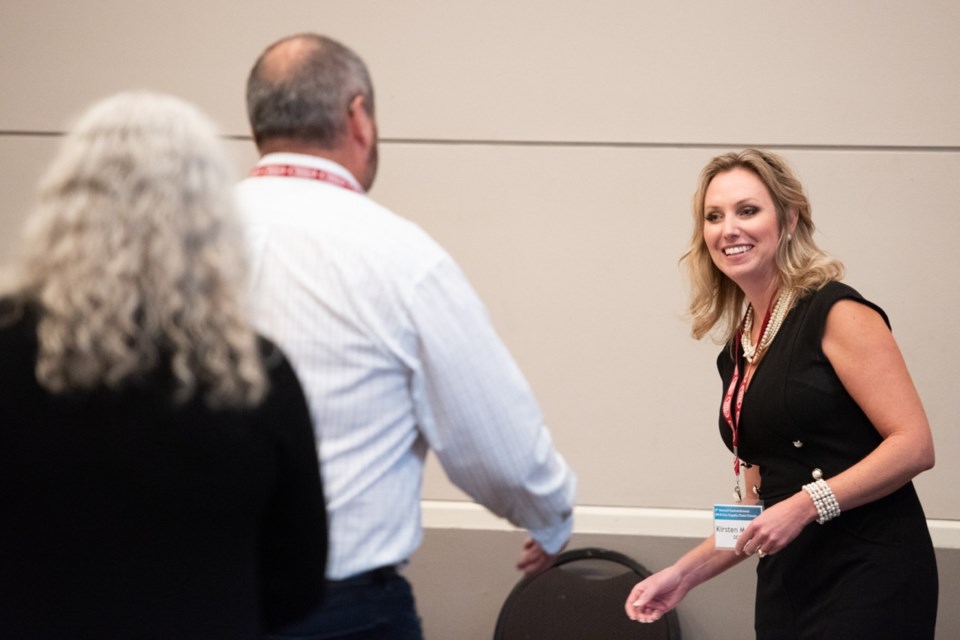Drilling on the second Deep Earth Energy Production (DEEP) geothermal power production well was expected to begin in late October.
DEEP is working on developing baseload electrical power generation, with geothermal heat derived for very deep wells south of Torquay.
Former Estevan resident Kirsent Marcia, who is the president of DEEP, said, “Now that we’ve done our flow and build up test, we are back in the field.”
The first thing they did was recompleting the first well into an injection well, and then they took all that fluid on the site and injecting it down into the injection well. It’s been monitored with gauges to see how well it responds to reinjection.
“As soon as that’s complete, we’re drilling our second well.”
This will not be a typical horizontal well like most directional wells in the region. In fact, it’s not a horizontal well at all. Those are drilled straight down, then turning horizontally and running essentially flat for hundreds of meters.
The second DEEP well will be drilled adjacent to the first hole, but instead of going straight down all the way like the first, it will be directionally drilled at an angle to the southwest, kicking off the build section around 1,300 metres. The toe of the well will end up about 1,500 metres laterally away from the bottom of the initial well.
The resulting configuration of the two wells will approximate the shape of a right triangle, with the base of the triangle being the Deadwood and Precambrian formations where the system will draw very hot brine from, and then reinject it into via the first well. The second well will be the hypotenuse of that triangle.
The initial well will become an injector, and the new, second well will be the producer. It will be larger in diameter than the first well.
Once complete, a 60-day production and injection test will commence on the project’s first combined geothermal well pair. This is required for the final engineering design.
Marcia said, “Things can move quite quickly at this standpoint. We need that second well in place so we can do the long-term loop and refine our engineering and construction plans. But after that, things can move very quickly. The longest lead item isI ordering the Organic Rankine cCcle power generating facility, which can take 12 to 16 months. The rest is infill drilling.”
“At this point, we believe we can have power to the grid at the end of 2021 or the beginning of 2022.”
Marcia spoke of the recent flow test. She explained that the brine from the initial well is 10 times saltier than sea water. “The joke is this is the water you can actually walk on,” she said.
Understanding how that brine behaves when you cool it, at what point the salts precipitate out when cooled, what are those salts, what kind of bacteria is in this old, ancient fluid are all pertinent questions. To that end they had a water expert working on the science end of the project.
Those salts may be a key side benefit, as she alluded to the possibility of mineral extraction.
“We’ve also acquired the mineral rights. We know from our brines that we have a lot of interesting elements that end in ‘ium.’ We’re looking at the potential processing to acquire those to this project.”
“We’re looking at additional revenue streams and opportunities to maximize the heat that we’re going to recover out of the ground,” Marcia said.
After the brine had gone through the plant, it will still be 65 C. “We’re looking at what we can do with 65 C heat. The most obvious one is greenhouses. If we take half of our fluid and direct it to a greenhouse, we could heat a 50-acre greenhouse. That’s massive.
The first facility is planned to be five megawatts, net, but the future is hopefully much larger. “Think of a wind farm, 100, 200 megawatts. That’s our vision for this first field in Saskatchewan.”
Marcia noted they have received not only private funding, but also from the federal government via Natural Resources Canada under the Emerging Renewable Power Program. The first project was a tidal power project for the Bay of Fundy, and the second project is DEEP’s.
There’s also been funding from the province.
After her presentation, Marcia expressed gratitude for local community support and enthusiasm, saying, “It’s one of the things we don’t see in other places of the world. We sometimes don’t realize how important that support is for any type of resource project, going forward.”



.png;w=120;h=80;mode=crop)
